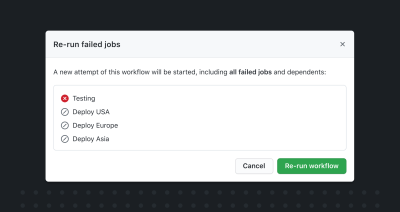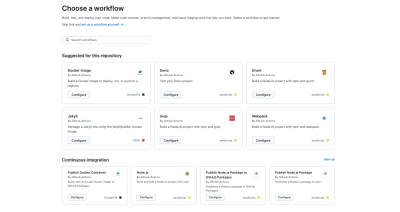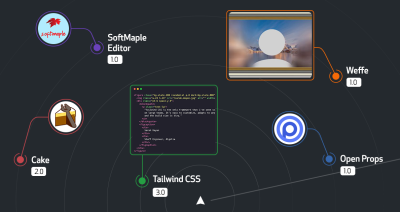
Save time with partial re-runs in GitHub Actions
It is now possible to re-run only failed jobs or a single job in GitHub Actions workflows.

It is now possible to re-run only failed jobs or a single job in GitHub Actions workflows.

Explore and understand your overall GitHub-hosted Actions runner capacity with the new runner view.

GitHub Actions workflows in the Security category will now appear among the workflow recommendations based on a repository’s content.

Reusable workflows offer a simple and powerful way to avoid copying and pasting workflows across your repositories.

A quick guide on the advantages of using GitHub Actions as your preferred CI/CD tool—and how to build a CI/CD pipeline with it.

The dependency graph helps developers and maintainers understand the code they depend on, and now includes GitHub Actions!

Our community has been hard at work through December shipping updates. Here’s our staff picks for open source projects with major version releases.

We’re excited to announce the V4 release of the OpenSSF’s Scorecard project in partnership with Google.

When you want to create a workflow in the Actions tab of your repository, the recommendations are now based on an analysis of repo content.

Looking to avoid security vulnerabilities, buttons that don’t work, slow site speeds, or manually writing release notes? This one’s for you.

GitHub has partnered with the OpenSSF and Project Sigstore to add container image signing to our default “Publish Docker Container” workflow.

From learning YAML to scripting with Bash, here are a few simple tips for developers who want to speed up their workflows.

DRY your Actions configuration with reusable workflows (and more!)

GitHub Actions now supports OpenID Connect for secure deployment to different cloud providers via short-lived, auto-rotated tokens.

The GitHub Services Engineers have released the Advanced Security Enforcer GitHub Action to enable organizations to utilize code scanning in a consistent and automated way.
Build what’s next on GitHub, the place for anyone from anywhere to build anything.
Last chance: Save $700 on your IRL pass to Universe and join us on Oct. 28-29 in San Francisco.